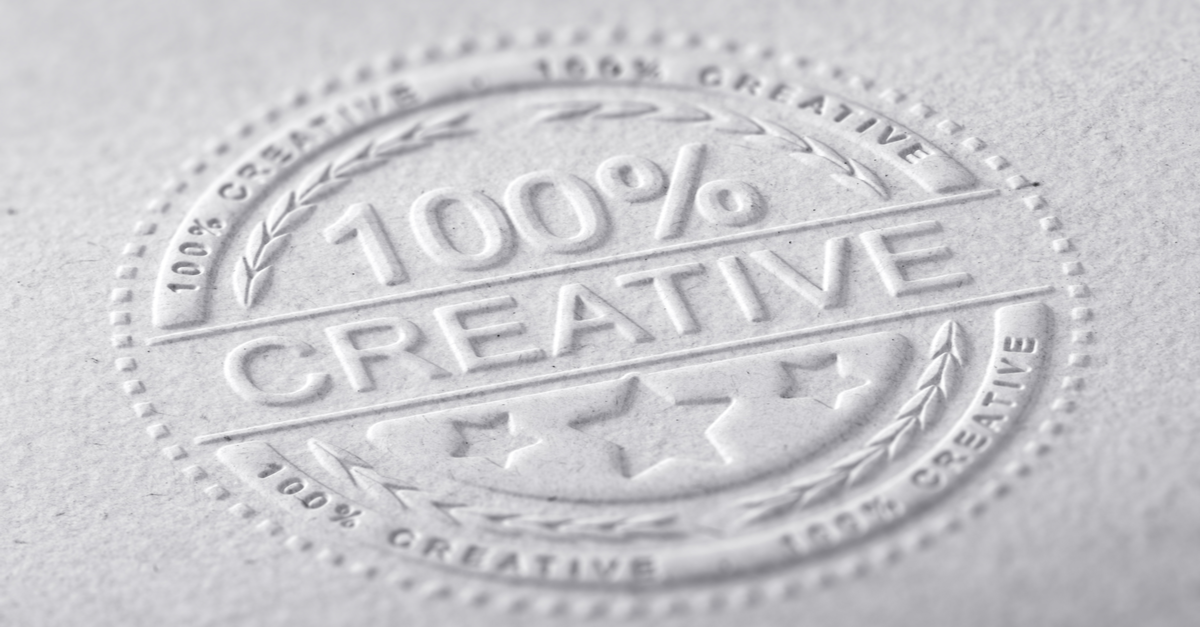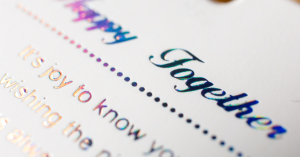“How do I make my printed brochure really stand out from my competition?”
We get this question all the time. Apart from the unique selling points from your marketing plan, there are smaller ways to give your print materials that extra “umph!” In short, embellishments are a quick way to give your printed materials an edge over your competition.
For commercial printing jobs, embellishments are the decorative details that make your printed pieces stand out from the rest. Adding these elements of interest to your piece can help draw attention to specific areas you consider important. Or they can simply complete a beautiful presentation.
When used effectively, print embellishments can convince prospects of the quality of the piece, as well as the care, dedication and attention-to-detail of those who designed and printed it. Embellished pieces look and feel special, and adding embellishments can bring an otherwise dull, unexceptional piece to life. What’s more, print embellishments place extra emphasis on particular aspects of the piece.
Producing and designing a piece with embellishments will require a commitment of both time and money, but they are definitely worth it. In the end, they can make all the difference.
Related: Unique Print Folds You’ve Never Considered
How to Dress up Your Prints Using Embellishments
Maybe you’re printing out corporate event invitations and you want to make your guests feel special by adding a few personalized details. Or maybe you need a new set of business cards and your company wants the logo to be subtle, yet powerful. In this case, you can use embossing to produce a tactile texture that makes people think of quality and professionalism. The possibilities are endless!
Here are a few examples of embellishment techniques that create a greater impact for your print pieces:
Digital Foil
Digital foil consists of bonding metallic foil to the paper. Similar to traditional foil stamping, which uses mechanical stamping dyes, the process uses digitally printed images or designs that adhere to the paper.
Embossing
The embossing process creates relief images and designs on paper and other materials. There are many embossing types, including blind emboss, registered emboss, combination emboss, glazing and scorching. This process works best on thicker paper stock.

Debossing
Debossing is the reverse process of embossing — it creates lowered images or designs on paper by stamping them into the material. Just like embossing, this process also works well on thicker papers or other materials, like cardboard or leather.
Laser Cutting
The laser cutting process consists of melting, burning or vaporizing the material using several types of lasers. You can use software such as Adobe Illustrator to generate a line or path that the laser must follow. The process is very useful for designs with intricate shapes and patterns. You can also use it to personalize a variety of objects, such as glass, wood, plastic and more. Laser cutting is an excellent option for custom projects.
Spot UV
Spot UV applies a clear gloss coating over paper or cardstock. It creates an interesting contrast between the elements that are shiny and reflect light and the elements that are uncoated, which remain matte. The technique is called Spot UV because the varnish is cured and solidified with ultraviolet light, giving it a glossy finish.
Sometimes print embellishments are necessary, while other times they’re simply the finishing touch that adds the ‘wow’ factor to your printed piece. Embellishments are definitely something to consider if you’re creating promotional or marketing materials. Make sure to do your research, or contact us to choose the perfect, most suitable technique for your project.




